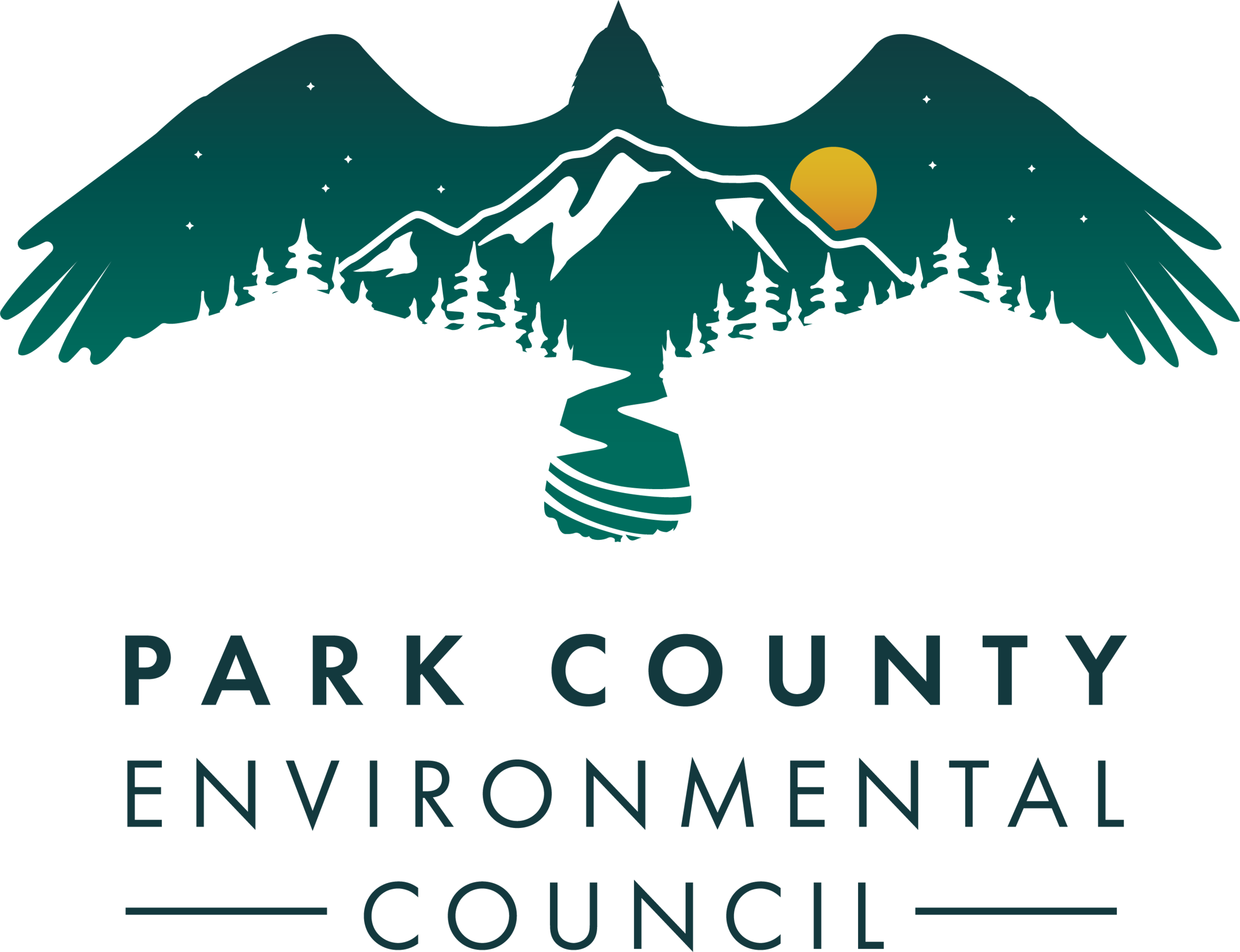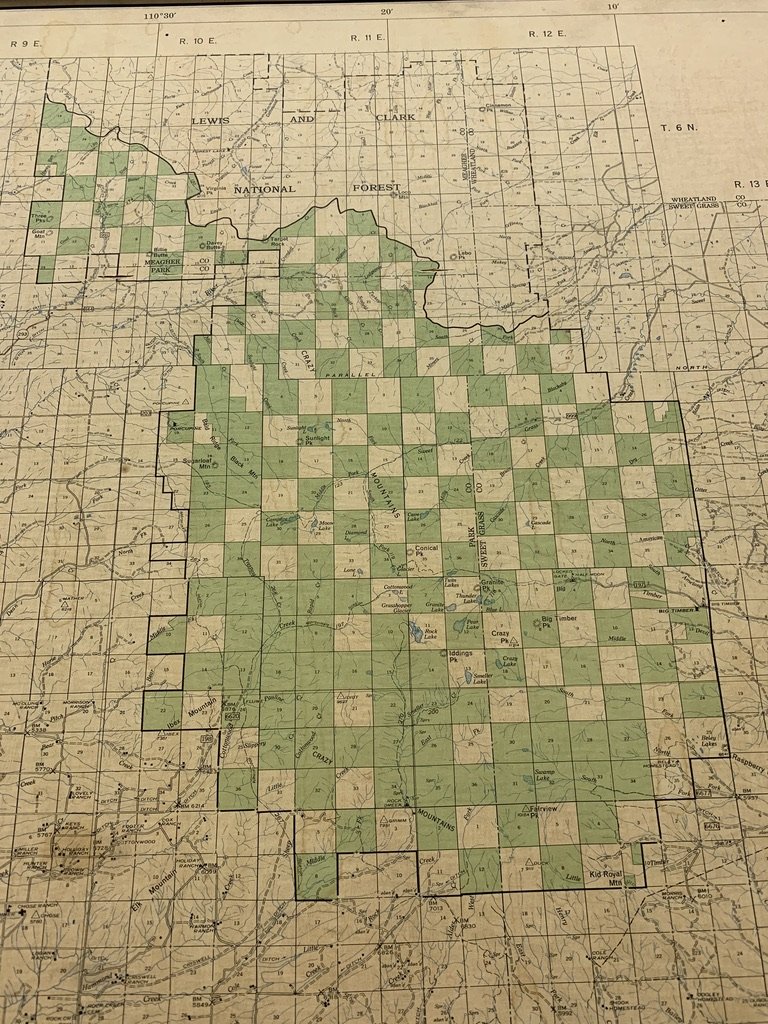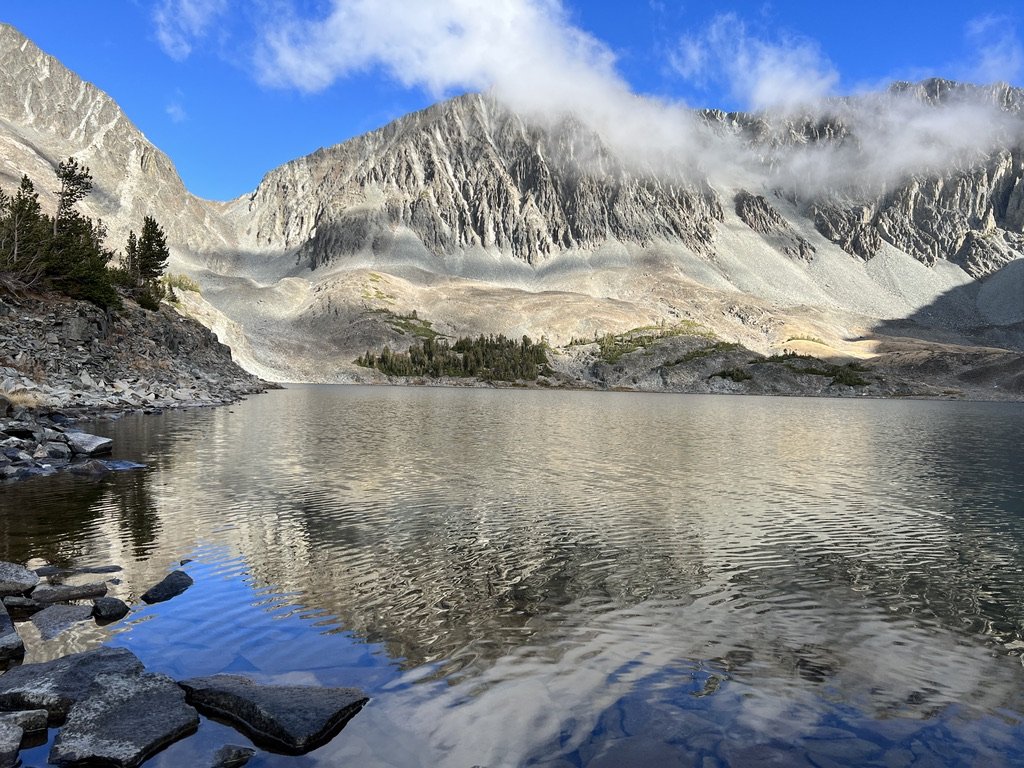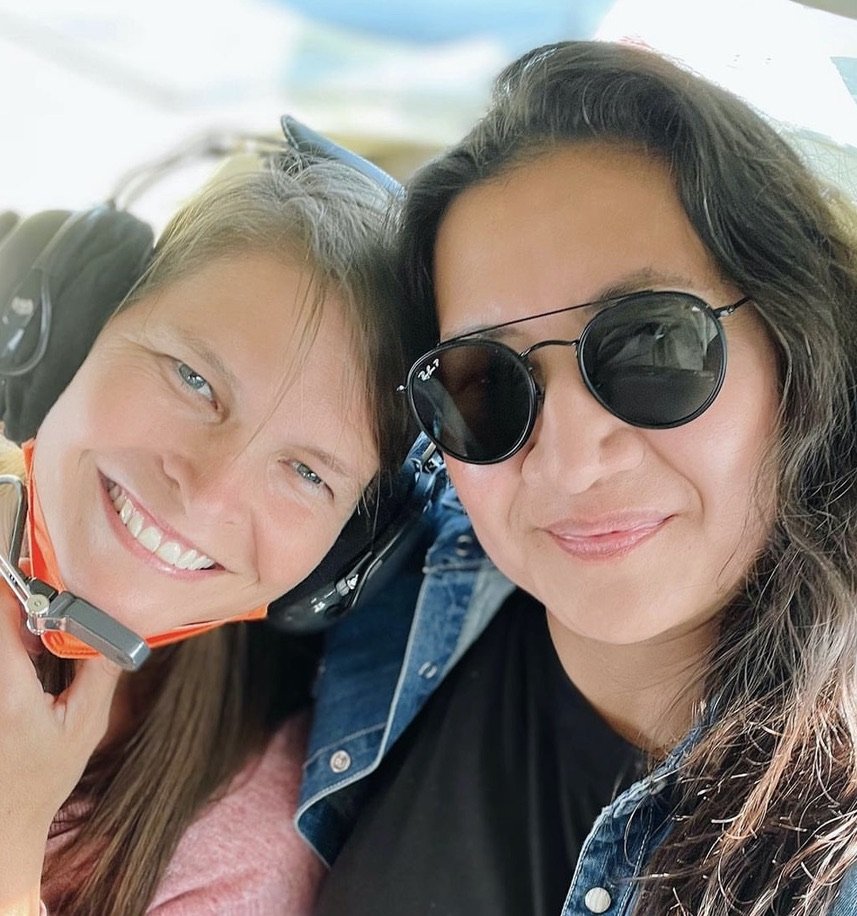The Crazy Mountains
working with neighbors to protect the wild, working and Indigenous landscapes of Montana’s Crazy Mountains.
PCEC has long been a local advocate for the Crazy Mountains, or as we refer to them locally, the Crazies; in fact, our organization’s original name was Crazy Paradise, reflecting our regard for the importance of the mountain range for Park County.
The Crazy Mountains are a high-alpine island mountain range surrounded by working ranchland and river valleys in southwest Montana. The mountain range provides critical wildlife habitat for several threatened species and is a significant Indigenous landscape with deep human history. Some of the earliest people in the Americas followed the bison here. A nearly 13,000 year old Clovis-era burial site, near the present day town of Wilsall, sits in the range’s shadow, one of the oldest known Clovis sites in North America. According to the Native Land Digital website, these are native lands of the Crow, Salish, Cheyenne, Sioux, and Blackfeet Nations (native-land.ca) and contain important vision quest sites. The Crazies are wild, yet face an uncertain future.
The legacy of checkerboard land ownership is on full display in the Crazy Mountains. A majority of the odd numbered sections in the interior of the range are still privately owned. This has not only created a history of conflict over land management and public access, but also makes the Crazy Mountains a particularly vulnerable landscape to development in our growing corner of Montana.
At PCEC, our long term vision for the Crazy Mountains is a consolidated and contiguous public landscape with secured public access and permanent designation of the national forest lands. We aim to protect the wilderness character, biodiversity, habitat connectivity, cultural sites and open working landscapes of the range and its surrounding river valleys. We’ve been generating momentum towards our long term conservation goals through building local relationships and participating in the discussions with diverse members of our community for more than 7 years as part of the Crazy Mountain Working Group.
Porcupine Ibex Trail
The Working Group’s first successful project took place on the west side of the Crazies.
The Porcupine Lowline Trail #267 has been on official U.S. Forest Service maps for over a century, but it traveled primarily through private land and did not have recorded easements. The location and legality of the route was disputed by the landowner and was no longer accessible to the public.
As a result of the dialogue in the working group, the Forest Service and landowners agreed to a reroute of trail #267. Landowners granted permanent easements through sections of their property so that the new route is located almost entirely on National Forest lands. The trail now connects the Porcupine and Ibex Cabins, and provides public access to Elk Creek and several sections of public land.
The trail, open to foot, horse, and mountain bikes, connects Elk Creek and Trespass Creek drainages and provides access to Campfire Lake. Trail construction to relocate the Porcupine Ibex trail was completed in 2021. Combined with Elk and Trespass Creek trails, the Porcupine Ibex trail will eventually create a 20-mile loop on the western side of the range.
South Crazies Land Exchange
PCEC submitted comments to the U.S. Forest Service on the proposed South Crazy Mountains Land Exchange, a proposed land swap at the southern end of the range in November 2019.
PCEC is taking the long view in the Crazies. This island mountain range is unique, and an important refuge for wildlife, including endangered and threatened species like the Canada lynx and wolverine. We believe the best way to protect wildlife habitat in the Crazies is through the consolidation of public lands in the interior of the range. While the South Crazies Land Exchange was consistent with these goals, part of the swap was controversial to hunters in our community. There is very little accessible low elevation hunting ground in the Crazies, and the original proposal gave up some high-value, lower-elevation public land habitat.
In 2021, the USFS closed on the South Crazy Mountains Land Exchange, swapping 1,920 acres of national forest for 1,877 acres of private land. They listened public input, and removed the more controversial lands from the swap. The modified proposal will not consolidate as much land, but it leaves the door open for future work. It was a major step forward on the southern end of the range.
East Crazies and Inspiration Divide Land Exchange
Building off the success on the west side of the Crazies, a broader coalition of landowners and partners, including PCEC, initiated a land swap proposal to help consolidate public and private land and secure public access on the east side of the range. To share details and gather public feedback on the proposal, we launched the Crazy Mountain Access Project (CMAP), and hosted several open houses in Livingston, Big Timber, Bozeman and Big Sky in the summer of 2020. Explore an online map of the citizen land swap proposal.
Through outreach efforts and the website comment portal, PCEC received feedback that guided our conversations with landowners involved in the project. For example, many of the public comments requested this proposal go through an administrative process through the Forest Service instead of being legislated through Congress. In July 2021, CMAP submitted an updated version of the land exchange proposal to the Forest Service for analysis and review.
On November 9th 2022, the Custer Gallatin National Forest released the Preliminary Environmental Assessment East Crazy Inspiration Divide Land Exchange (EA), and commenced formal analysis on the citizen-proposed land exchange. They are accepting public comment on the proposal until December 23rd.
The Forest Service hosted two public meetings on November 15th in Bozeman and November 16th in Big Timber to share information and answer questions about the EA. PCEC attended both, and heard a wide range of feedback and questions from the two meetings.
We strongly urge you to take the time to review the preliminary EA for yourself and make a public comment through the Forest Service portal. This land exchange will impact the landscape and our communities forever. It’s a rare and important moment to be involved and add your voice to the discussion.
PCEC is supportive of several elements of this land exchange proposal, but we also have suggestions and concerns. The Crazies are an invaluable resource for our community and deserving of the utmost care and consideration. Now is our opportunity to ask for Forest Service to make it a stronger deal for conservation and our community.
To assist you with your comments and answer any questions, check out our blog or join our Online Community Conversation, Tuesday, December 13th at 12:00PM noon on Zoom. Register HERE to participate.
If you have any questions or or would like to discuss your ideas or concerns in the meantime, please do not hesitate to reach out to me, Erica Lighthiser via email at erica@pcecmt.org
Crazy mountain oral history project
How do we ensure this landscape is protected for future generations? What is the ‘spirit of this place’? The Crazy Mountains are meaningful to so many different people, and we intend to break down the implicit filters that prevent us from working together and finding solutions; to create empathy, unity, authentic, and pragmatic collaboration. To be the best possible ancestors to future generations, we need all hands on deck, and we need to find ways to empathize and understand one another, especially the voices that have been marginalized or oppressed that we may gain the most knowledge from.
Storytelling is a medium we can all understand across cultures. Using the oral history method, we will interview Indigenous, settler/homesteader, and modern storytellers with multiple perspectives and highlight diverse connections to the landscape.
In 2022 PCEC teamed up with oral historian Francine Spang Willis and established the Crazy Mountain Oral History Project to create a comprehensive, enduring record of the place and layered history of the mountain range. An evolution of our land exchange and trail reroute efforts, CMOHP will share stories of the diverse communities connected to the Crazy Mountains, aiming to create connections between people and create a deeper collective understanding of the histories, attitudes and relations between the land, wildlife, water, and humans. CMOHP will result in an oral history archive, podcast, and ultimately inform our future stewardship efforts in the Crazy Mountains.
We believe that by applying insights and approaches of the humanities to the environment, we will make better decisions that benefit more people and nature. We also hope to inform and inspire future stewardship and protection efforts in the Crazies, Montana, and the West.
Film by Sam Saarel











